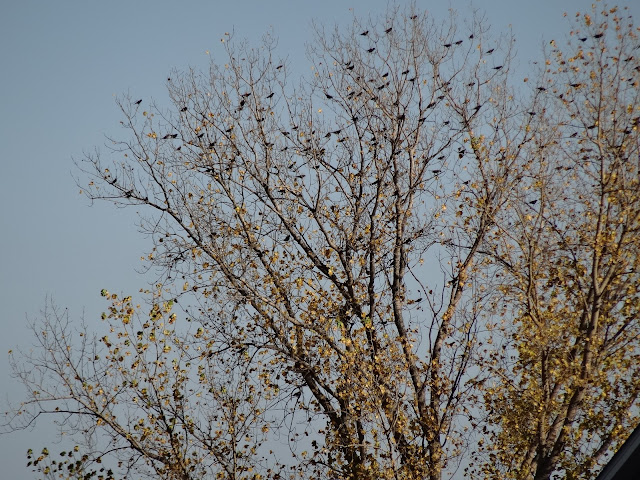We see many Sandpipers on the pond each Spring and Autumn. They are hard to tell apart! I think this is a Solitary Sandpiper, because it has a dark bill. Solitary Sandpipers nest further north of Minnesota, but Spotted Sandpipers nest all around the state. 
5/03/2023
sandpipers
4/27/2023
yellow-rumped warbler
Yellow-rumped Warblers Setophaga coronata arrived here on the pond today on migration to the northern part of Minnesota and Canada, where they will nest and breed young birds. Also called "Myrtle" Warblers. On migration they eat fruits and seeds. Here, they flit along the shoreline hunting insects among the grasses. These individuals came to the feeders to eat thistle and sunflower chips. When more insects appear and the Warblers arrive on the breeding ground up north, they will eat caterpillars and other larvae, small beetles, weevils, ants, scale insects, aphids, grasshoppers, caddisflies, spiders, and gnats.
11/04/2022
5/18/2022
5/04/2022
10/18/2021
black birds roosting
5/03/2021
fox sparrow
5/01/2021
spotted sandpipers
A flock of shorebirds stopped today at the pond on their migration trip. Spotted Sandpipers Actitis macularius, catch food in several different ways. Like most other sandpipers, they probe into sand or mud with their bills looking for food -- aquatic larvae of insects, beetles, worms, snails or crustaceans. And like herons, they also lunge at moving small fish in the water, pick insects off plants, or snap at flying prey.
4/21/2021
blue-wing teal
12/11/2020
crow
This American Crow Corvus brachyrhynchos is hunting near the frozen pond for something to eat.
It may be preparing to migrate . . . or not.Individual crows are consistent in whether they migrate or stay in the winter. Partial migration (where only some of a species migrate) might give crows enough flexibility to adapt to changing environmental conditions. Some we see in Minnesota now may have come south for the winter from Canada. Others, who breed and nest here, may have gone to Nebraska for the winter. Crows return faithfully to the same breeding territory each year.
11/09/2020
temperamental autumn
9/28/2020
Phoebe in September

Phoebe is hunting at the pond today, balanced carefully on a reed bending over the water, with a reflection mirrored in the hazy sunlight.
Eastern Phoebes Sayornis phoebe are usually lone birds. Other than nesting season, one will rarely join another phoebe. They will sit upright and wag their tails from a low perch, looking for flying insects to eat.
They migrate south starting in September, wintering in the southern states. And, they are among the first migrants to return to their breeding grounds in spring, sometimes as early as March.











